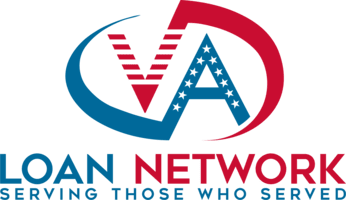In this Article
Understanding VA Loan Eligibility
Not everyone who served in the military qualifies for a VA loan. To determine eligibility, the Department of Veterans Affairs (VA) considers your length of service, duty status, and discharge conditions.
VA Loan Eligibility Guidelines
To qualify for a VA home loan, you must meet specific requirements set by the U.S. Department of Veterans Affairs. These guidelines focus on your length of service, duty classification, and discharge status.
- Wartime Service: Served at least 90 straight days of active duty during a recognized period of war.
- Peacetime Service: Completed a minimum of 181 continuous days of active duty during peacetime operations.
- National Guard or Reserves: Either six years of honorable service, or 90 days of active duty under Title 32 (with at least 30 days served consecutively).
- Veterans: Must have fulfilled minimum service requirements and received a discharge that is not dishonorable.
- Active-Duty Personnel: Current members of the military may be eligible based on their time in service.
- Reserve and Guard Members: Must meet length-of-service benchmarks or qualifying active-duty time.
- Surviving Spouses: Spouses of service members who died in the line of duty or due to service-related conditions may also be eligible.
VA Loan Eligibility Calculator
VA Loan Eligibility Requirements for 2025
To qualify for a VA home loan in 2025, you must meet service-based eligibility guidelines from the Department of Veterans Affairs. Qualification is determined by your military service record, discharge status, and duty type. Once eligible, a Certificate of Eligibility (COE) confirms your benefits to lenders.
- Active-Duty Members: At least 90 continuous days of service
- Veterans (Post-1980): 24 months of continuous service or 90 days during wartime
- Guard & Reserves: 6 years of honorable service or 90 wartime active days
- Surviving Spouses: Must be un-remarried; veteran’s death must be service-related
- COE Requirement: Required to access benefits — get your COE here
How to Get Your Certificate of Eligibility (COE)
Your COE is proof of your VA loan entitlement and can be obtained in a few simple ways. Most applicants receive it within minutes through a VA-approved lender or by submitting a request directly to the VA.
- Through a VA Lender: Most lenders retrieve your COE electronically
- Online via VA.gov: Log into your account and request it directly
- By Mail: Submit VA Form 26-1880 to the VA Eligibility Center
Credit and Income Guidelines for VA Loans
VA loans do not have a strict minimum credit score, but most lenders look for a score of 620 or higher. However, lenders in our network can approve VA loans with a 580 credit score. Your debt-to-income ratio and residual income also play a critical role in loan approval.
- Credit Score: Most lenders require a score of at least 620, soem can go down to a 580
- Debt-to-Income Ratio (DTI): VA prefers 41% or lower, but exceptions are common
- Residual Income: You must meet regional benchmarks based on family size
- Low Score Exceptions: Some lenders may approve lower scores with strong income
VA Residual Income Requirements (2025)
Residual income is the amount left after monthly debts, ensuring you can afford basic living expenses. Minimums vary by region and household size.
| Family Size | Northeast | Midwest | South | West |
|---|---|---|---|---|
| 1 | $450 | $441 | $441 | $491 |
| 2 | $755 | $738 | $738 | $823 |
| 3 | $909 | $889 | $889 | $990 |
| 4 | $1,025 | $1,003 | $1,003 | $1,117 |
VA Loan Property Requirements
VA loans must be used for a primary residence that meets VA safety and livability standards. Homes must pass a VA appraisal and meet zoning codes.
- Property must be your full-time primary residence
- Must have working electrical, plumbing, and heating systems
- No major structural or safety issues allowed
- Property must meet local residential zoning requirements
- Must pass a VA appraisal confirming condition and value
Can You Use a VA Loan More Than Once?
Yes, the VA loan benefit is reusable. Veterans can access their benefit multiple times through entitlement restoration or using any remaining eligibility.
- Restore Entitlement: After paying off or selling the previous home
- Use Remaining Eligibility: Buy a second home if original benefit wasn’t maxed out
- Own Two Homes: Allowed in specific cases like PCS relocations
- Loan Assumptions: Entitlement remains tied until assumed loan is repaid
VA Loan Limits and Funding Fees (2025)
If you have full entitlement, there’s no official loan limit. If you’ve used some entitlement, the 2025 standard limit is $806,500 (up to $1,209,750 in high-cost areas). Funding fees help sustain the VA program.
| Down Payment | First-Time Use | Subsequent Use |
|---|---|---|
| 0% Down | 2.15% | 3.3% |
| 5% Down | 1.5% | 1.5% |
| 10%+ Down | 1.25% | 1.25% |
Funding Fee Exemption: Veterans with a service-connected disability (10% or more) do not pay the funding fee.
VA Loan Process: Step-by-Step
From pre-approval to closing, the VA loan process is straightforward and designed to help Veterans become homeowners with confidence.
- Step 1: Get pre-approved with a VA lender
- Step 2: Work with an agent to find and agree on a home purchase
- Step 3: VA appraisal and underwriting confirm property and financials
- Step 4: Finalize your paperwork and close on your new home
Why VA Loans Are the Top Mortgage Option in 2025
VA loans remain one of the best mortgage options in 2025 for Veterans and military families. With no down payment, no PMI, and flexible guidelines, they make homeownership more accessible.
- Zero down payment required
- Below-market interest rates
- No monthly mortgage insurance
- Credit-flexible approval process
- Reusable benefit with entitlement restoration
Frequently Asked Questions Qualifying for VA Loans (2025)
What is the minimum credit score for a VA loan?
Most lenders require a 620 score, but some may accept lower with strong financials or residual income.
Do VA loans require a down payment?
No. VA loans offer 100% financing, so no down payment is required.
Can I use a VA loan more than once?
Yes. You can reuse your benefit by restoring entitlement or using unused eligibility.
Do VA loans include private mortgage insurance (PMI)?
No. VA loans never require PMI, saving borrowers hundreds monthly.
Can I buy a rental or vacation property with a VA loan?
No. VA loans are only for primary residences, not investment or secondary homes.
What is the VA funding fee?
The VA funding fee is a one-time fee that supports the loan program, usually 1.25% to 3.3% depending on use and down payment.
How long does VA loan approval take?
On average, VA loans close in 30–45 days depending on appraisals and lender processing speed.
Can sellers pay my closing costs?
Yes. VA allows sellers to cover closing costs, up to 4% of the loan amount.
Am I exempt from the funding fee?
If you have a 10% or higher service-connected disability rating, you’re exempt from the fee.
Is a VA appraisal the same as a home inspection?
No. A VA appraisal verifies value and safety, but it is not a full home inspection.


